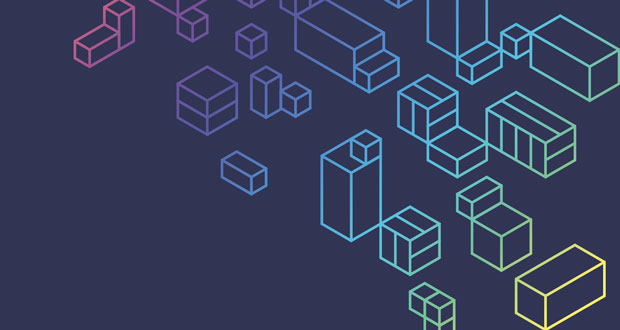NEW WAYS OF WORKING
According to Breeze of Matrix Booking, before any changes are made to help coordinate hybrid working, you need clarity around how you want to transform the workplace.
He says: “Before we recommend any software tools, we focus on the use of data to guide organisations in reviewing their real estate and reassessing what the new workspaces are for. Utilisation and occupancy data should inform any decisions; crucially because every company’s scenario will be different. This data-driven approach will make sure that the process of transition isn’t a tentative trial and error attempt; but a concerted commitment to a new working dynamic.”
The key word here is “adaptability” comments MRI’s Bullard. “The latest CAFM software must be proactive in helping organisations adapt to the ever-changing requirements placed upon the facilities industry. They should be agile enough to support managing hybrid working environments, as more often than not, there’s no longer a ‘normal’ or ‘standard’ in the built environment. If your CAFM solution is not flexible enough to adapt already, you might want to consider whether it is the right one for you.”
Managing occupancy has never been so challenging, so for Breeze, new flow management solutions can address an organisation’s ability to manage the flow of people to and through buildings, avoiding overcrowding and enabling physical distancing in communal areas.
“They enable teams to manage their visits to the office by utilising the same familiar, intuitive applications as experienced with meeting room and desk booking. Users can schedule their arrival time, desk and meeting rooms via a mobile app before they even leave the comfort of their home giving them control, comfort and confidence.”
Because many facilities are nowhere near as populated as they were during the week, says Paul Whitter, CEO of BigChange: “Data analytics can identify periods of low use or no use for plant in these premises, enabling management to take informed decisions on temporarily shutting plant down or reducing run times.
“Using BMS a facilities manager already has the ability to control plant and plan ahead. You have visibility of areas that are not going to be used, enabling you to accurately plan plant shutdowns. Instead
of emails from HR reminding you to turn off the lights and properly shut down your office computer, a CAFM system will give facilities managers all that data and that visibility, so they can adjust schedules accordingly.”
ENERGY MANAGEMENT AND NET ZERO
Deploying a CAFM tool that enables organisations to understand and monitor their energy consumption through customisable reporting and analytics can play a big part in helping them move toward a net-zero position says Bullard and there are tools to track and manage energy usage to boost sustainability.
“MRI Software’s portfolio includes eSight Energy, a UK-based software development company that empowers property owners, operators, and occupiers worldwide to manage their energy consumption and environmental footprint.
“The software integrates with a broad range of real estate data sources and delivers a unified view of a company’s energy footprint – whether via interactive dashboards or detailed, customisable reports. The result is to provide actionable insights that reduce consumption.”
 Coleman also feels that by monitoring energy usage across an estate, CAFM software provides a detailed picture of areas where inefficiency can be tackled.
Coleman also feels that by monitoring energy usage across an estate, CAFM software provides a detailed picture of areas where inefficiency can be tackled.
She says: “It can also help proactively manage assets with routine checks and PPM, ensuring all equipment operates at peak efficiency. The comprehensive reporting capability in CAFM systems allows facility managers to use data for efficient and informed decision-making – resulting in the more productive use of resources.”
Cutting down the commute is another advantage of using the right software, says Breeze. “Many civil servants were commuting further than necessary to work in previously designated buildings or having to work from an office that was not conveniently located close to where they needed to be that day.
“By expanding access through our Public Sector Hub Network comprising over 375 sites, offering 2,700 shared meeting and collaboration spaces and tens of thousands of desks, employees can now easily search the vast public sector estate and choose the location or workspace that best suits their requirement.”
MEETING COMPLIANCE
In terms of compliance, Ostara’s experience has fuelled a philosophy of identifying what clients should have, not just what they already have.
Explains Harrison: “For each legislative requirement (or client identified standard), the system is configured to be building ‘type’, or asset driven. This allows for accurate reporting of actual compliance levels against requirements, and subsequent identification of PPM needs.
“One of the key advantages of CAFM systems is the ability to systemise and reduce client administrative input. However, this should be accompanied by a level of client oversight and review. A good CAFM system should be easy and quick to audit, whenever a client requires.”
Alison Wright points out that the introduction of IoT infrastructures around buildings, has presented the asset and maintenance management domain with additional asset classes to maintain.
She explains: “One of the cases here is the timely replacement of batteries now present in many types of sensors. Although the activity is simple, the required timeliness of replacement as well as the diversity in location of sensors represents new types of use cases for CAFM.
“In addition to this we see integration of BMS (Building Management Systems) as a trend which provides important information on asset condition, operating efficiencies and energy use of the systems attached to the BMS. Analysing that data provides valuable information on interventions that should be planned for.”
Aside from office space efficiency, Bullard believes that the ability to access, analyse and understand data through CAFM software is increasingly valuable for a number of sectors.
“FM in healthcare is critical. Understanding what is happening on-premise with patients enables healthcare providers to optimise their resources – which has become more important than ever in the UK, even as the country recovers from the pressure of the pandemic. CAFM tools give healthcare providers oversight of what’s going on with their facilities, including staff presence in many cases, enabling them to ensure they can care for patients in a quick manner and provide them with beds.
“In retail, there is a difference in the needs of each retail setting. For example, there will be a difference between clothing and grocery setting. Both will ultimately want to understand what is happening and ensure safety compliance, which a CAFM system would support.
“The focus of CAFM in an educational settings used to be focused on space management; now, it’s on the achievements of students. A CAFM system provides additional data that enables educational institutions to improve facilities for optimal learning.
“What remains common across all is that FM used to be about fixing things. FM is now about recruitment, retention, and helping people feel safe in their facilities.”





